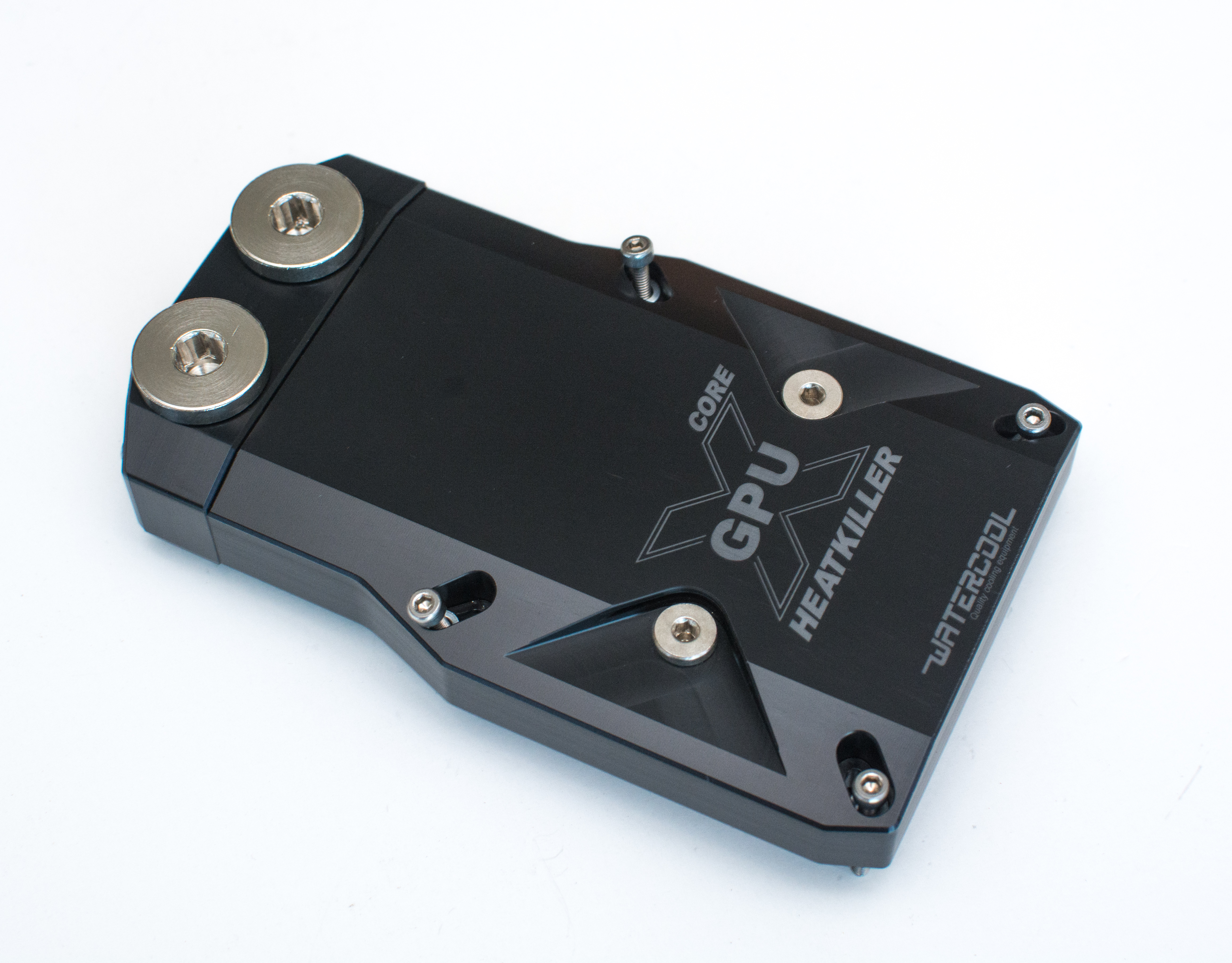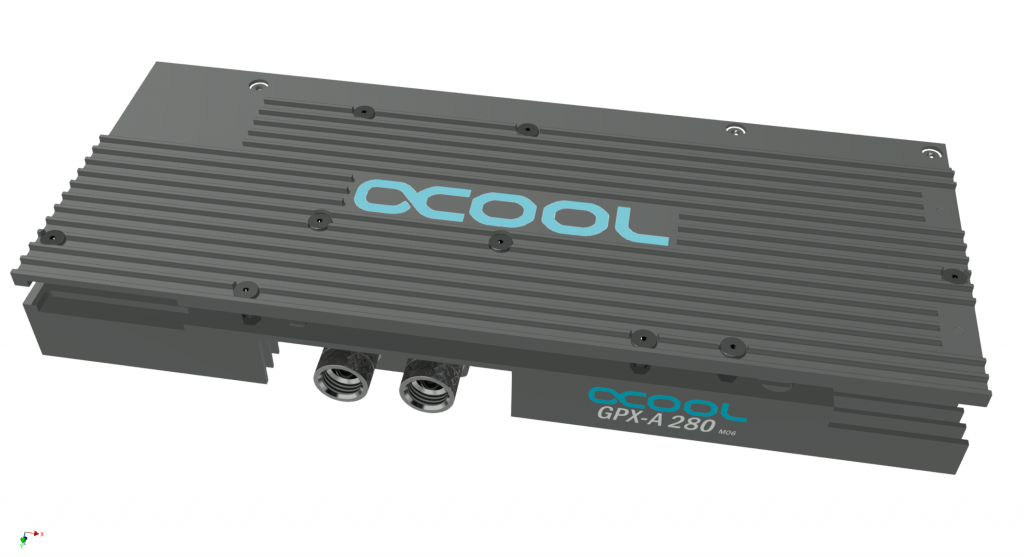Alphacool GPX-A290
Price – $96
This is an unusual block in that we had already reviewed it in the full cover roundup here. However that review is the context of full cover blocks, while this review is in the context of universal blocks. The test sample that was shipped to us included the backplate and frontplate and so this was not truly the universal version of this block, however it can be converted to one with the right parts (which are not available to buy separately). The truly universal version is called the solo and can be found here. However there is no reason to get the solo over the specific GPU version apart from price. The backplate and front plate adds on about $35 and offers acceptable VRM and VRAM cooling. Reusing the core and buying new front and backplates for future GPUs will lead to considerable cost savings over a full cover alternative. However the long term savings may be less than other options. So let’s take a look at this “hybrid” “universal” cooling solution:
The block and backplate arrive in a typical alphacool style box:
Surprisingly there is no protection from damage at all:
Some accessories are included but not the ones needed to mount the block without the backplate:
The backplate doesn’t look bad, while the main block does look a bit cheap:
The aluminum plate has cutouts for the various taller components such as capacitors:
In addition unlike most full cover blocks that have two pairs of ports this only has one pair that is less friendly to use in most computer cases and will most likely require a 90 degree rotary adapter. Note that for multi GPU setups that bridges are available to buy to make connecting the cards much easier.
The backplate is seriously thick and ribbed for better surface area and hence cooling:
It is then combined with some seriously thick 3mm thermal pads that are put almost all over the card:
Alphacool claim the thickness is necessary for safety in order to avoid shorting the backplate to the solder joints on the back of the card. If this were the case other manufacturer’s would have similarly thick pads. On the other hand other manufacturers use pads between 0.5mm and 1.5mm thick. Using 3mm is in other words primarily a cost saving measure so that the backplate does not need to be machined.
Similarly the thermal pads on the front of the GPU are 1.5mm thick:
Again this is unnecessarily and will lead to unnecessarily worse thermal performance.
The end result is a really thick sandwich:
The result of such design is of course a compatibility issue. If you are using this on the first PCIE slot you should be extremely careful. My albeit tight Maximus VI Impact board had the backplate catch on the memory slots. Even though I suspected this would be an issue, the card looked like it was in the slot just fine, but powering on killed the card. Later wiggling showed that the card wasn’t in fact 100% of the way in the slot. After the card died, and I got another card, I tried the backplate with two other motherboards – the first the Rampage IV Extreme – possibly the most popular enthusiast X79 ATX motherboard also had compatibility issues with the first slot. Similarly the Rampage IV Gene mATX board also had issues. In talking with Alphacool they mentioned this is because they hadn’t realized that Asus would be willing to break the motherboard/pcie specifactions. Alphacool claim to meet spec with this design. They also mentioned that they are redesigning the backplate to remove the lower ribs and use countersunk screws so as to reduce compatability issues in future. This is good – here is the proposed design style for future backplates that we expect to see for the GTX 980:
It is worth noting that the thermal performance of the VRM and VRAM cooling will be very subject to air flow in your case. High airflow will improve performance if desired.























Is there any reason why the Micro SW-X can not be used in combination with any other universal cooler? My choice would be the EK Supremacy VGA (mostly because it’s so tiny and should allow the use of VGA cooling pads compared to some other bigger models) with the Micro SW-X in series.
Also, how where did you get that T-shaped VRAM – VRM heatsink? http://abload.de/img/mxlcv7010sd7.jpg Why is it T-shaped? Are the surface mount components beside the VRM higher than the VRM itself? Same problem like with the GPU – VRM? I am a bit worried about the VRAM – VRM temperature which has no temperature sensor.
[…] 2014 Universal GPU Block Roundup […]
Comments are closed.